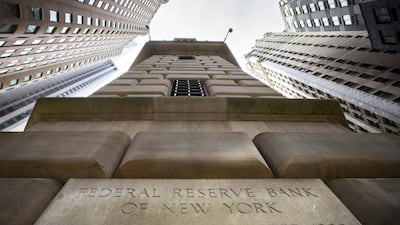The US proposed tax cuts are not necessary because the country will need to maintain revenues to help pay for an ageing population and tackle its high debt over the medium term, an IMF official said.
President Donald Trump's administration has promised tax reforms, which include a tax break that could have a revenue cost of US$2 trillion over a decade. The tax reforms are part of measures Mr Trump wants to undertake to boost growth to more than 3 per cent.
The US economy grew a better-than-forecast 3 per cent in the second quarter, the best three months since the first quarter of 2015 and higher than the 1.2 per cent expansion clocked in the first quarter of this year.
_____________
Read more:
IMF leader: we must protect global growth
_____________
“We think overall the US needs tax reform but it needs tax reform that is eventually revenue raising not revenue reducing.,” said Gian Maria Milesi-Ferretti Deputy Director in the Research Department of the International Monetary Fund.
“That should be the strategy rather than sort of saying well we are going to have a ton of growth and that will take care of the revenues.”
Mr Trump is proposing to lower taxes at a time when the US debt topped in September $20tn for the first time ever. Unemployment is also dropping, with the US jobless rate falling to 4.2 per cent in September, a new 16-year-low.
“Our policy recommendation is that you shouldn’t (cut taxes) because the US is basically at full employment so it really does not need a major tax cut,” said Milesi-Ferretti. “Clearly tax reforms can be helpful for growth if it does the right things in terms of simplification of incentives but one has to be cognisant of the fact that the US has a debt problem. Over the medium term, public debt is high and the population is ageing and outlays for health and old age pensions are going to rise.”
The number of US residents age 65 years and older between 2000 and 2016 grew from 35 million to 49.2 million, climbing from 12 percent of the total population to 15 percent, according to the US Census bureau.
The same age group is projected to more than double to over 98 million by 2060 and its share of the total population will rise to nearly 24 per cent from 15 per cent, according to a Washington-based think tank, the Population Reference Bureau.
In its world economic forecast, the IMF identified the ageing population as a key risk to advanced economies such as the US.
In its October outlook, the IMF revised downward its growth forecast for the US to 2.2 per cent this year and 2.3 per cent in 2018, lower than projections of 2.3 and 2.5 per cent respectively in its April outlook to reflect “a major correction in US fiscal policy assumptions.”
The IMF’s outlook assumes no change in US policies, while in its April forecast it had taken into account the possibility of fiscal stimulus from anticipated tax cuts. Over the long term, growth in the US is projected to slow to 1.8 per cent because of “continued sluggish growth in total factor productivity and diminished growth of the workforce due to population ageing.”

